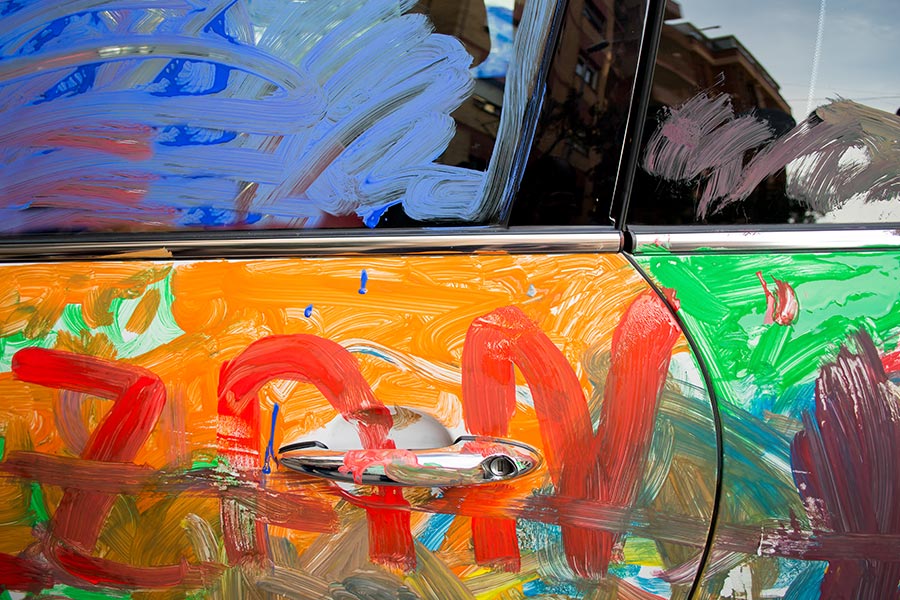How Can I Effectively Remove Overspray From My Car’s Paint?
Airborne contaminants—from industrial primers and road tar to neighboring construction paint—can bond aggressively to your vehicle’s finish, leaving a rough texture and dull appearance. While the frustration is immediate, the correct solution must prioritize safety, non-abrasive technique, and guaranteed restoration.
Before attempting any method, understand that effective overspray removal is not a DIY task. Any aggressive rubbing or use of harsh chemicals risks causing permanent damage to your clear coat. The most effective, safest, and guaranteed method is always professional hand removal.
WARNING: Why DIY Overspray Removal Fails (And Causes Damage)
Most tutorials suggest using clay bars or consumer rubbing compounds. These methods are ineffective on deep contaminants and pose major risks to your factory finish:
| DIY Risk | The Danger |
| Mechanical Buffing | Causes irreparable swirl marks and holograms that compromise the clear coat and lead to future paint failure. |
| Harsh Chemicals | Can permanently stain or etch the paint, plastics, or rubber trim, significantly lowering the vehicle’s value. |
| Incomplete Removal | Fails to lift all contaminants, leaving the vehicle susceptible to accelerated oxidation and future claims. |
The Safe, Proven Method: Professional Hand Removal
For guaranteed restoration without compromising the clear coat, the industry-standard method used by experts like Nationwide Overspray is specialized, non-abrasive hand removal. This technique ensures the finish is restored to its pre-damaged state, or better.
4 Steps to Guaranteed Restoration:
- Chemical Identification: The process starts by accurately identifying the contaminant (epoxy, urethane, tar, etc.) to select a specific, non-damaging chemical solvent to safely loosen the bond.
- Ulen’s Polish Application: We use proprietary products like Ulen’s Polish—a professional-grade, oil-based cleaner—to gently break down the contamination and lift it from the surface.
- Meticulous Hand Removal: All work is done by certified technicians by hand (no high-speed buffers). This painstaking, slow process guarantees the foreign material is lifted without generating the friction that causes swirls.
- Final Protection: The finish is detailed and sealed with a high-gloss wax, ensuring the paint’s original shine and protection are fully restored.
Should I Use a Clay Bar to Remove Overspray?
A clay bar is designed to remove light, surface-level contamination (like light rail dust or road grime), but it is generally ineffective and risky for paint overspray or hardened industrial coatings.
- Ineffective on Paint: Paint overspray is chemically bonded and often requires a professional solvent. A clay bar will typically smear the paint or fail to remove it entirely.
- Risk of Marring: If the contaminant is abrasive (like cement dust), rubbing a clay bar over it can grind those particles into the clear coat, causing more damage than the initial overspray.
For paint overspray, you need specialized chemical expertise, not friction.
Guaranteed Results: Stop the DIY Risk Today
Your car’s paint is a significant asset. Don’t gamble its integrity with unproven methods. When facing stubborn paint, tar, or industrial contamination, choose the safe, certified, and guaranteed solution.
Nationwide Overspray has processed over 1.5 million claims and offers rapid deployment of fully mobile crews to address your contamination issue anywhere in the country.
Ready to safely restore your car’s finish? Contact the Nationwide Overspray removal experts today for a professional assessment and a guaranteed clean resolution.

